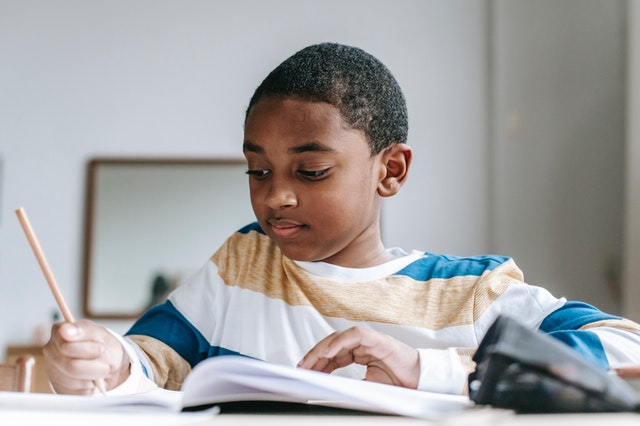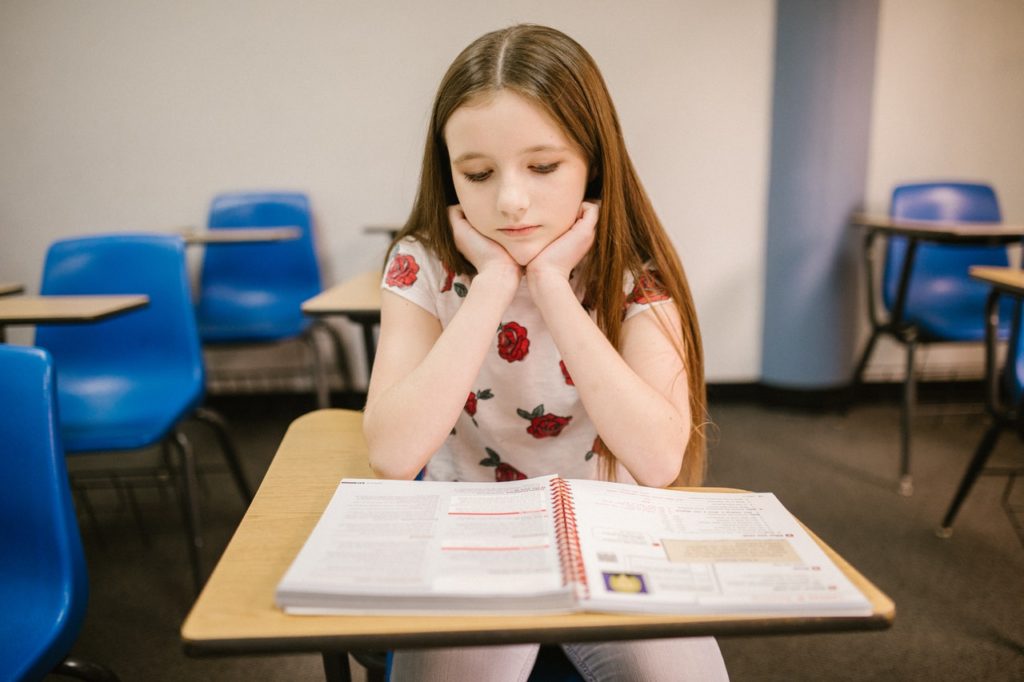Table of Contents
Anxiety is not usually classified as a learning difficulty, but as any teacher would know, students with severe anxiety can oftentimes have great difficulty accessing learning in the classroom just as much as any student with a diagnosed learning difficulty. Students who suffer from severe anxiety have high stress levels even without stressors and often struggle to deal with the added pressures school can put on them, often leading to avoiding work, shutting down, or even refusal to attend school.
Identifying Students with Severe Anxiety in the Classroom

Anxiety can be difficult to identify as each person may exhibit different behaviors when having an attack. Some students are also better at hiding their anxiety than others.
While there is no one behavior that describes them perfectly, students with high anxiety are often described by their teachers as…
- Doing significantly worse on tests than classwork.
- Being reserved and quiet, especially during more stressful times.
- Having a repetitive nervous habit like twisting hair or shaking legs.
- Refusing to attempt stressful things or sometimes even come to school.
5 Targeted Interventions for Students with Sever Anxiety
1: Be flexible with seating.
Being seated near a trusted friend, by the teacher’s desk, or in the back of the room can sometimes help students with anxiety to be able to better focus in class. During an anxiety attack, it can help to be near a close comforting friend or a supportive teacher. Even if the student isn’t experiencing a specific anxiety attack, it can actually help to prevent one from arising due to the increased feeling of security the student will feel.
Simple seating changes can make a big difference to a student who is naturally uncomfortable. Some students also prefer to sit out of the center of attention by being in the back of the room or in a corner. While they may need to change seats occasionally for activities or throughout the year to work with multiple partners, trying to give that student a place where they have some sort of support is a simple way to make a big difference for them.
It is important however, that preferential seating only be implemented in cases where it is truly going to make a big difference as when half of the class has different rules for who they can or can’t sit next to, it can become extremely complicated and result in rigid student pairings that will lead to inflexible students.
2: Sometimes let the student walk severe anxiety off.
Environment plays a large role in how students with high anxiety experience stress. Certain locations or set ups that are associated with higher stress can prime the student’s brain to prepare its “fight or flight” systems even before anything has started.
For example, a student who has been struggling in their chemistry class walks into class, their mind may begin ramping up in preparation for what it assumes will be an anxiety producer. Obviously the student can’t just avoid their chemistry room, but the teacher can still use this knowledge of the stress of the physical space to their benefit.
When a student has been working for a while and is struggling or is taking a test and seems to be reaching a breaking point in their stress, invite the student to take a walk to the bathroom or just around in the hall for a few minutes. This time away from the visual and psychological triggers of the room or testing set up can give the student the ability to reset and return for another round of effort.
Trying to force the student to stay in the room and struggle through may be sometimes warranted to build resilience, but in most cases, the student will be so preoccupied with the anxiety attack that they won’t be paying any more attention than they would be in the hall.
3: Try to avoid surprises for students with severe anxiety.
Another thing that can rev up the fight or flight response of a student is a surprise. Tests are already one of the main problems for students who struggle with anxiety. (McDonald) Pop quizzes or last minute changes can be really difficult for students who struggle with anxiety as it doesn’t give them any time to process the coming challenge or use any of their strategies to overcome their anxiety. Trying to avoid surprises or giving the student advanced notice will allow them time to come to terms with what they will have to do and be mentally ready when the time comes.

4: Find safe ways to build confidence.
Eventually, students with severe anxiety will have to face challenges and overcome their fears. While teachers should always keep in mind that certain students will struggle more with their stress than other students, they can not let this anxiety keep the student from reaching their potential. Students with high anxiety will certainly need help with building their confidence and ability to control their body’s stress response however, and teachers can scaffold challenges in a linear way to help slowly prepare the student to face greater and greater challenges.
Students with high anxiety often struggle with presentations. This doesn’t mean that they shouldn’t do them though. Instead of just having the student present once, have them present multiple times to increasing numbers of audience members. First, they can just practice the speech alone, then present it to a trusted friend or parent. After that, they can present it just to the teacher, where they can get feedback, and a few coping strategies for their stress.
Then, perhaps with a few more practice rounds with their friend or parent, they can present once more for a small group consisting of the teacher and that close friend or relative and perhaps a couple of other friends. By slowly increasing the audience to how it will be on presentation day, there will be less of a shock to the system and the student will be less likely to freeze up or break down when they look out at the sea of eyes looking at them.
Especially since one of the main goals of presentations is to build student confidence, the teacher should also be willing to modify expectations for students that struggle in this domain just as they would for any other student who is behind their peers.
Allowing the student to read directly from their notes can give them a huge safety net and help them develop confidence at an appropriate level for their current ability. Some teachers may see this as allowing the student to cheat or get away with doing less, but the learning objectives are more focused on building student confidence and learning about the topic that was researched for the presentation.
Even if they use notes, the student will still have learned about the topic even if they haven’t memorized it all. This will still push the student out of the comfort zone, but there is less of a chance for total failure as the student can just read instead of worrying about going blank. Having the student do it with notes is a lot better than the student not doing the presentation at all or falling apart and worsening their anxiety for presentations further.
As long as they are improving and doing better than they have in the past, this should be sufficient. Not every student will become a professional speaker, and even those that are still using notes while in school may be able to do public speaking in the future due to the support their teacher gave them to be able to overcome their fears.
5: Ensure the student has someone to confide in during anxiety attacks.
Presentations and tests aren’t the only causes of anxiety, and some causes may be wrapped up in more severe trauma, neglect, or home-life issues that will require more long term support to deal with appropriately. One of the major factors in how successful students with high anxiety are in school is the social support they have. (Nijhawan)
Students need a stable home life and someone to open up to and discuss their anxieties. A teacher may be able to fill that role as someone to confide in, but especially with more severe cases, it may be necessary to involve the school psychologist or counselor.
Even in cases where the student hasn’t gone through something traumatic, the teacher should check in to make sure that the student has someone they feel comfortable opening up to. A brief conversation about how they get along with their parents, who their best friend is, or even just directly asking if they have someone to open up to can make a huge difference to a student who feels anxious and alone. Knowing that someone is there to support them, even if they can’t open up to them, will help the student to not feel like they’re alone.
Want more like this? Make Lab to Class a part of your weekly professional development schedule by subscribing to updates below.
References
McDonald, Angus S. “The Prevalence and Effects of Test Anxiety in School Children.” Educational Psychology, vol. 21, no. 1, 2001, pp. 89–101., https://doi.org/10.1080/01443410020019867.
Nijhawan, H. K. (1972). Anxiety in school children. Halsted.




